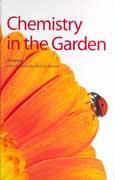Simon Cotton reviews this text on natural chemistry
Chemistry in the garden
J. R. Hanson
Cambridge: RSC 2007 | Pp158 | £14.95 | ISBN 978 0 85 404897 7

'Chemistry determines much of what happens in the garden' are the opening words of this wide-ranging book, which takes us through the subject in eight chapters. A chapter on the biosynthetic relationship of natural products has a useful overview of the pathways used to make this amazing cornucopia of molecules, including a reminder of the important roles played by the isoprenoid unit and by acetyl coenzyme A.
An impressive feature of the book is its coverage of 'bread-and-butter' substances, such as the properties that make cellulose such an important structural material. In the chapter on soil we learn of its organic and mineral content, and of the important roles of pH, nutrients and microbial interactions.
More obvious is the importance of pigments, such as anthocyanins, to the appearance of plants and of the range of substances found in floral scents. In several places we are reminded of the relationship of plants with insects, for example the ability of plants to produce antifeedants (eg the glucosinolate sinigrin in cabbage), as well as volatiles that prime neighbouring plants to switch on their defences, or summon predators of pests. Terpenes, for example, are produced when white caterpillars damage cabbage leaves and summon parasitic wasps which lay their eggs in the caterpillars.
No book of this length can be fully comprehensive, but when I tested it with molecules that came to mind, such as glyphosate (present in Roundup herbicide) and galanthamine (the Alzheimer's drug found in daffodils), I found them, likewise the organosulfur compounds in onions and in garlic. The book includes a thorough index and has a good bibliography.
Priced at £14.95, this is especially good value for a hardback. I recommend this book to A-level teachers not just for themselves, but also to give to students who want to discover organic chemistry beyond that in the A-level chemistry specifications.






No comments yet